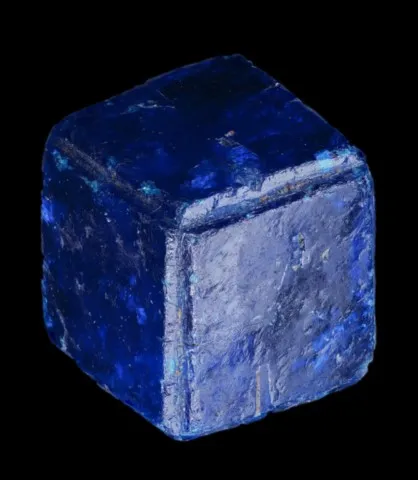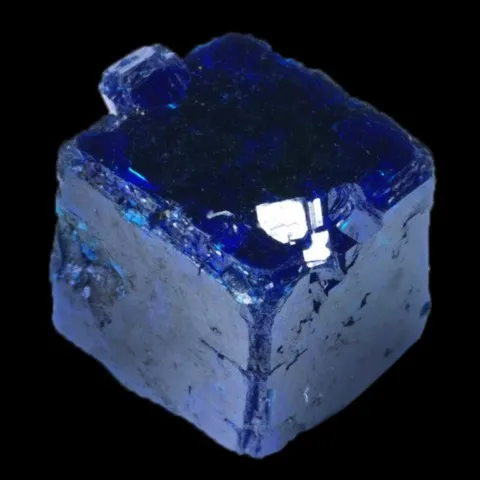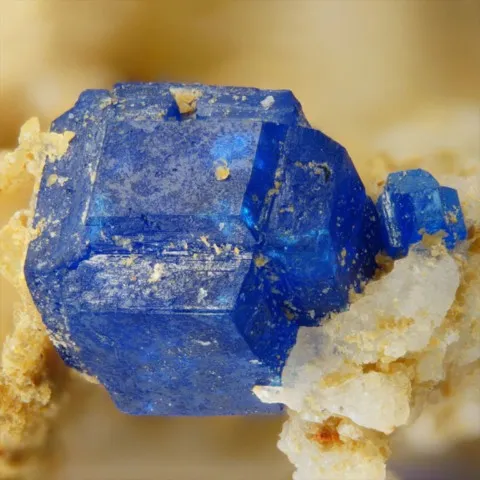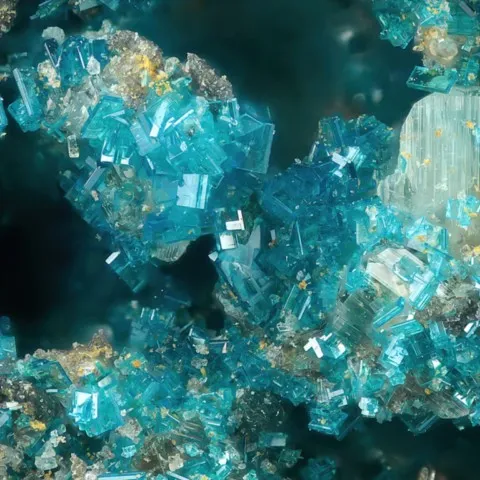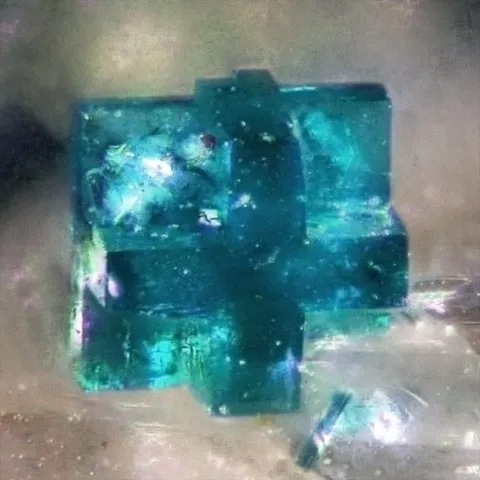PSEUDOBOLEITE
Class : Halides
Subclass : Oxychlorides
Crystal system : Tetragonal
Chemistry : Pb31Cu24Cl62(OH)48
Rarity : Uncommon
Pseudoboleite is a very rare secondary mineral from copper deposits, typical of arid climates in a chlorinated environment (closed basins, evaporite lagoons and marine coastlines). It is also found in certain industrial slags. Its name is constructed from the Greek pseudês (false) and boleite, because we observe a chemical relationship between these two minerals. Pseudoboleite very rarely forms individual tabular crystals, always very small (less than 1 mm); it usually constitutes oriented (epitaxial) lamellar intergrowths on the faces of cubic boleite crystals.
Main photo : Pseudoboleite epitaxy on boleite from Boleo, Mexico © Christophe Boutry
Pseudoboleite in the World
Twinning
Multiple twins on {100} are known but very rare and can form singular cross pseudocubes.
Fakes and treatments
No fakes listed for this mineral species.
Hardness : 2.5
Density : 4.85
Fracture : Undetermined
Streak : Pale green
TP : Translucent
RI : 2.000 to 2.030
Birefringence : 0.030
Optical character : Uniaxial -
Pleochroism : None
Fluorescence : None
Solubility : Nitric acid
Magnetism : NoneRadioactivity : None

